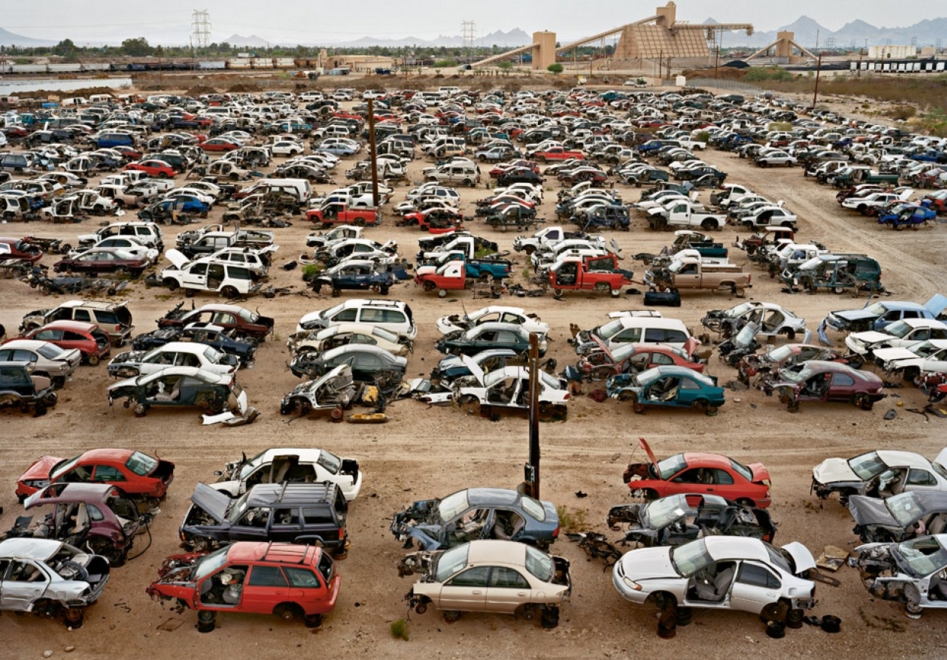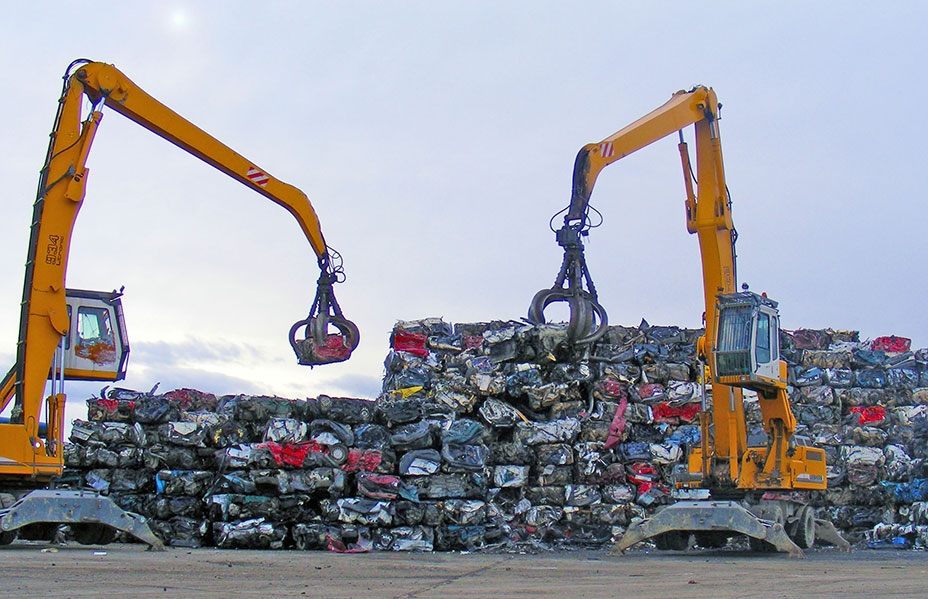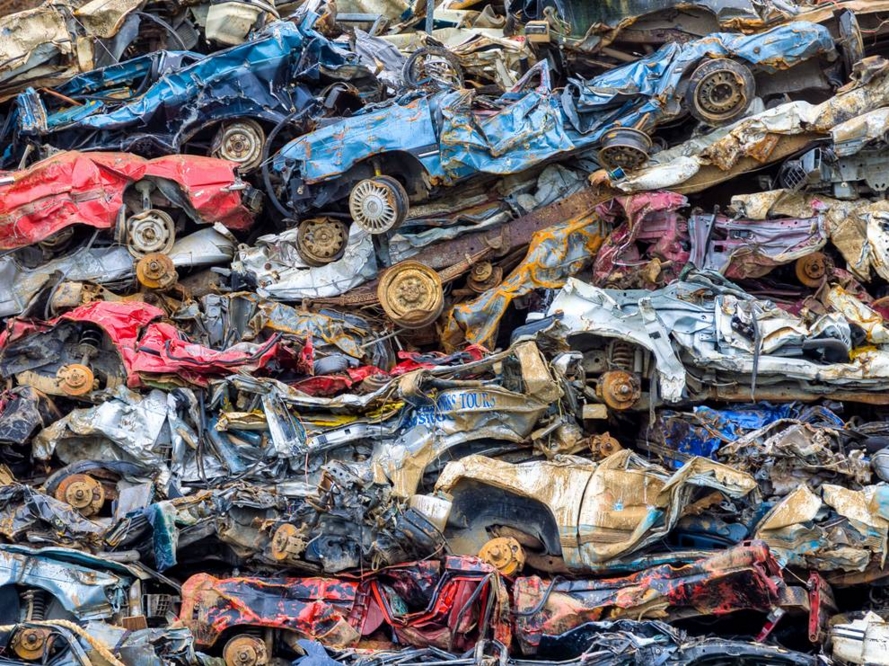Many people appear to be very surprised to find out that steel is the most recycled material in the word. A great deal of steel and iron scrap for recycling comes from end-of-life vehicles. Automobiles are the most recycled consumer product containing a very high percentage of materials that may be recycled and steel or iron content amounting up to 65%. This fact makes end-of-life vehicles recycling a lucrative business. You definitely need to know how it is being tackled.
End-of-life vehicle recycling process
An end-of-life vehicle is any transport item that has reached an end of its useful life. Some automobiles are classified as end-of-life vehicles because they are just old and cannot fulfill their transportation functions any more, whereas others are new, but on having experienced an accident are also discarded. Nevertheless, both of two types may get an afterlife and bring some extra money to their owners being recycled.

The process of end-of-life vehicles recycling is highly-elaborated and well-managed, though complicated. It begins with shipping of cars to a dismantler, where all reusable and recyclable parts extracted. All the car-parts containing any poisonous or contaminating elements, such as tires, batteries and fluids of different types must also be removed at this stage. Then hulks are transported to ferrous scrap processors to be weighted and valued. The following stage consists in shredding of materials left from vehicles. About 45 seconds is required for one car to undergo shredding process. While shredding, car wreckage is sorted into 3 streams, which are steel and other ferrous metals, nonferrous metals and items of non-metallic nature, such as upholstery, rubber, glass, plastic, etc. Ferrous metals are magnetically separated from other materials and shipped to end markets or steel mills for following recycling.
Modern technologies produce steel in two ways, both of which require scrap steel, though in different quantities. The more steel scrap is available, the more energy may be saved due to its recycling. Admittedly, steel production from scrap is much effective from an economical point of view, as well as for environmental protection. So steel scrap is a resource of a great significance and end-of-life vehicle remain the most abundant source of it. Approximately 75% of a vehicle is recyclable materials including glass, rubber and lead-containing batteries. Up to 65% of an end-of-life car is steel or iron. Modern technologies are aimed at advancing of recycling process in order to make most of scrap cars. The figures of automobile production coincide with the number of scrap cars being recycled in the world, which suggests that recycled steel cover needs for steel in machinery engineering. And these statistics is encouraging as steel recycling consumes considerably less amounts of energy. To give more precise figures, steel recycling enables to reduce air pollution by 86%, water pollution by 76% and water consumption by about 40%. In addition, it requires fewer natural resources to be used and mined in the first place, preserving wildlife and habitats intact.
End-of-life vehicles directive
Vehicle recycling has a long history, but at the beginning stages of its development it was not sustainable enough and caused considerable environmental damage. In order to make ELV recycling more efficient, some legislation was enacted. In the European Union the main law tackling automobile recycling is End-of-life vehicles directive. In 1997 the European Commission adopted a proposal of Directive to confront the problem of increasing number of motor vehicles, which have reached the end of their useful life. It was the first European Union waste directive, which aimed at reduction of waste from end-of-life vehicles and thus minimizing the environmental impacts.
 It also sets clear goals for reuse, recycling and recovery of end-of-life vehicles and their parts. It forces producers to manufacture hazardous elements-free cars, as well as promoting recycling as a whole.
It also sets clear goals for reuse, recycling and recovery of end-of-life vehicles and their parts. It forces producers to manufacture hazardous elements-free cars, as well as promoting recycling as a whole.
New goals for ELV recycling industry
As mentioned above, up to 75% of discarded vehicle may be recycled. But often, only metal items of automobiles undergo recycling process, whereas residue of non-metallic nature is just sent to landfills. Currently, there is an urgent need to force recyclers to make use of glass, plastic, wood, etc. Furthermore, shredder residue, so called automobile shredder residue (ASR), left after end-of-life vehicles may be a source for energy generation. In the United Kingdom, new advanced technologies for ASR further application in energy generation are currently being devised and reviewed. Unfortunately, there is no infrastructure in the United Kingdom to start these practices and without governmental pushing they aren't likely to emerge.

Consequently, recycling of end-of-life vehicles is not only beneficial because of energy savings during the production process and natural resources preservation, but it also suggests additional advantages, such as energy generation from non-metallic automobile shredder residue. But unless this process is promoted on the highest levels, any improvements seem to be unattainable.
Many people appear to be very surprised to find out that steel is the most recycled material in the word. A great deal of steel and iron scrap for recycling comes from end-of-life vehicles. Automobiles are the most recycled consumer product containing a very high percentage of materials that may be recycled and steel or iron content amounting up to 65%. This fact makes end-of-life vehicles recycling a lucrative business. You definitely need to know how it is being tackled.
